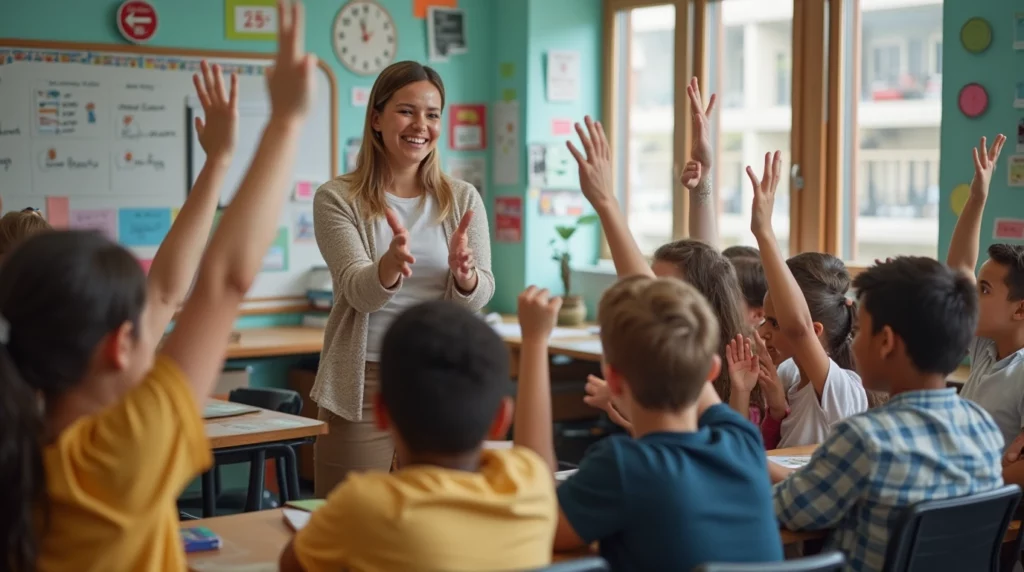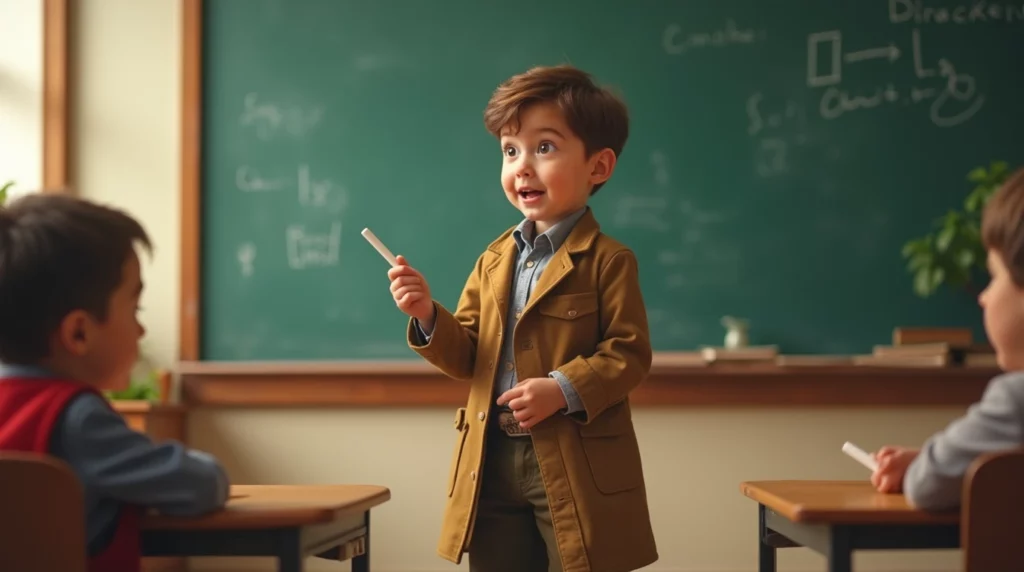Boost Engagement with the Little Teacher Strategy | Modern Education

Table of Contents
Have you ever imagined how your students could become true leaders in the classroom? Have you considered a way to make learning more interactive and dynamic, where students aren’t just listening and comprehending, but actively participating and leading discussions? If you’re looking for an educational tool that achieves this goal, the Little Teacher strategy is the answer you need. This strategy isn’t just a new idea; it’s a modern approach that redefines the learning process in an unconventional way.
In this article, we’ll take you on a comprehensive journey through the Little Teacher strategy, from explaining its basic concept to effectively implementing it in your classrooms. We’ll provide you with all the practical steps and real-world examples you need to successfully apply this strategy. Let’s get started!
What is the Little Teacher Strategy?

Definition of the Strategy
The Little Teacher strategy is one of many active learning strategies that aims to transform students from passive recipients of information into active participants in knowledge construction. In this strategy, a student is chosen to act as the “teacher” to explain a specific topic to their peers. Once the student assumes this role, they become responsible for preparing the lesson, delivering the explanation, and leading discussions within the classroom.
How It Works
- Choosing the Student Teacher: One student or a small group of students is chosen based on their good understanding of the topic.
- Lesson Preparation: The student prepares a presentation or explanation using educational tools like slides, diagrams, or even practical activities.
- Peer Communication: The student discusses the topic with their classmates, asks them questions, and listens to their answers.
- Role of the Main Teacher: The traditional teacher’s role shifts to supervision and guidance. The teacher monitors the learning process and intervenes only when necessary to guide discussions or correct information.
Key Benefits
- Boosts student self-confidence.
- Enhances student-content interaction.
- Creates an innovative and engaging learning environment.
Why Is the Little Teacher Strategy Effective?
Developing Student Skills
When students take on the role of “teacher,” they acquire many vital skills that help them in their personal and professional lives. Let’s look at some of these skills:
- Self-Confidence:
Imagine yourself in the position of a student who has to stand in front of their classmates and explain an entire lesson. This undoubtedly significantly boosts their self-confidence. - Communication Skills:
Students need to convey their ideas clearly and engagingly, which helps improve their public speaking skills. - Critical Thinking:
When a student explains a topic, they think about it deeply and try to rephrase it simply. This enhances their ability to think critically and analyze information.
Improving Content Comprehension
One of the most important features of the Little Teacher strategy is that it helps students achieve a deeper understanding of the content. When a student explains subject matter to their peers, they interact directly with the material and begin to understand it in a completely different way than just listening or reading.
Creating a Dynamic Learning Environment
Do you want to break the daily routine of traditional lessons? The Little Teacher strategy excels at achieving this goal. By encouraging students to participate and interact, the classroom transforms into a place full of positive energy and creativity.
How to Successfully Implement the Little Teacher Strategy

Practical Steps
Here’s a step-by-step guide to effectively applying the Little Teacher strategy:
- Choose the Right Topic:
Select a topic that is appropriate for the students’ level and not too complex. It may be better to start with moderately difficult material. - Provide Guidance:
Provide the student teacher with clear instructions on how to prepare and present the lesson. These instructions may include:
- Identifying the key points to cover.
- Using simple and understandable language.
- Preparing questions to stimulate discussion.
- Prepare Tools:
Encourage the student to use educational tools such as:
- Presentation slides (PowerPoint).
- Diagrams and charts.
- Short videos.
- Hands-on activities.
- Time Management:
Set a clear time limit for each part of the lesson. For example:
- 5 minutes for topic introduction.
- 10 minutes for explaining key points.
- 5 minutes for discussion.
- Evaluation and Feedback:
After the lesson, collect feedback from classmates and the teacher. You can also ask quick questions to test students’ comprehension of the material.
Tips for Success
- Choose the right student: Make sure the student teacher has a good understanding of the topic.
- Encourage everyone to participate: Don’t limit it to a few students.
- Continuous support: Always be available to provide help when needed.
Potential Challenges and Overcoming Strategies
Challenges
- Choosing the wrong student: This can reduce the effectiveness of the lesson.
- Poor time management: The lesson may take longer than planned.
- Ensuring scientific accuracy: The student may provide inaccurate information.
Solutions
- Choosing the right student: Select students who have a good understanding of the topic.
- Setting clear time limits: Establish a strict timetable for each part of the lesson.
- Continuous supervision: Ensure the main teacher monitors the process and intervenes when needed.
Practical Examples of Implementing the Little Teacher Strategy
Classroom Examples
- Physics: A student explains Newton’s laws using simple experiments.
- Literature: A student presents an analysis of a poetic text.
- History: A group of students delivers a lesson about a specific civilization.
Amazing Results
- Increased student engagement.
- Improved test scores.
- Enhanced enthusiasm for learning.
Conclusion: Start Implementing the Little Teacher Strategy Today!

The Little Teacher strategy is more than just an educational tool; it’s a means to bring about real change in the way learning happens in classrooms. It opens new doors for creativity and interaction, making every student a part of the learning process. If you’re looking for a way to motivate your students and make your classes more dynamic, don’t hesitate to try this fantastic strategy.
Have you tried this strategy before? Share your experience in the comments! And if you liked this article, don’t forget to share it with your colleagues and friends who might benefit from it.
Frequently Asked Questions (FAQ)
What is the Little Teacher strategy?
It’s an educational strategy where a student takes on the role of the teacher to explain a specific topic to their classmates.
Can the Little Teacher strategy be applied in all educational stages?
Yes, it can be applied at various stages, but it should be modified to suit the students’ level.
What are the benefits of the Little Teacher strategy?
Boosting self-confidence, improving communication skills, and achieving a deeper understanding of academic material.
How can inaccurate information in explanations be overcome?
Through continuous supervision by the main teacher.
Can the Little Teacher strategy be used in subjects like math or science?
Yes, it can be applied in all subjects, especially when using practical activities and experiments.
Table: Comparison Between the Little Teacher Strategy and Traditional Methods
| Element | Little Teacher Strategy | Traditional Methods |
|---|---|---|
| Interaction | High | Low |
| Student Role | Active | Passive |
| Deep Learning | Achieved | May not be achieved |
| Time Management | Requires organization | Easier to control |
Targeted Keywords:
- Little Teacher strategy
- Active learning
- Modern teaching strategies
- How to implement the Little Teacher strategy
Final Summary:
The Little Teacher strategy is a powerful educational tool that promotes interaction and deep learning within classrooms. By implementing it effectively, you can transform your students into successful leaders in an innovative learning environment. Try it now and see the results for yourself!
Frequently Asked Questions about the Little Teacher Strategy
What is the Little Teacher strategy?
The Little Teacher strategy is a modern educational approach that relies on a student taking on the role of a teacher to explain a specific topic to their peers within the classroom. The goal of this strategy is to enhance interaction between students and achieve a deeper understanding of academic material.
How can I implement the Little Teacher strategy in my classroom?
To implement this strategy successfully, you can follow these steps:
- Choose a student or a small group of students who have a good understanding of the topic.
- Provide clear instructions on how to prepare and deliver the lesson.
- Encourage the student to use educational tools such as presentation slides or practical activities.
- Set a clear time limit for each part of the lesson.
- Continuously supervise and guide the discussion when needed.
Can the Little Teacher strategy be applied in all educational stages?
Yes, it can be applied in all educational stages, whether elementary, secondary, or even university level. However, the strategy should be modified to suit the students’ level and their comprehension of the material.
What are the main benefits of the Little Teacher strategy?
The main benefits include:
- Boosting students’ self-confidence by taking on a leadership role.
- Improving communication and critical thinking skills.
- Achieving a deeper understanding of academic material by explaining it to others.
- Creating a dynamic and interactive learning environment.
- Breaking the traditional lesson routine and making learning more enjoyable.
Can the Little Teacher strategy be used in subjects like math or science?
Absolutely! These subjects are very suitable for applying the strategy, especially when practical examples or simple experiments are presented. For instance, a student can explain physics laws using simple household tools or illustrate mathematical operations visually.
How can I evaluate the success of the Little Teacher strategy?
To evaluate success, you can:
- Gather feedback from students about the experience.
- Monitor the level of student interaction during the lesson.
- Test students’ comprehension of the material after the lesson.
- Analyze test results or activities related to the material.
Can I use this strategy in e-learning?
Yes, the Little Teacher strategy can be applied in e-learning using platforms like Zoom or Google Meet. Students can present the lesson via video and use digital tools such as presentations or interactive whiteboards.



